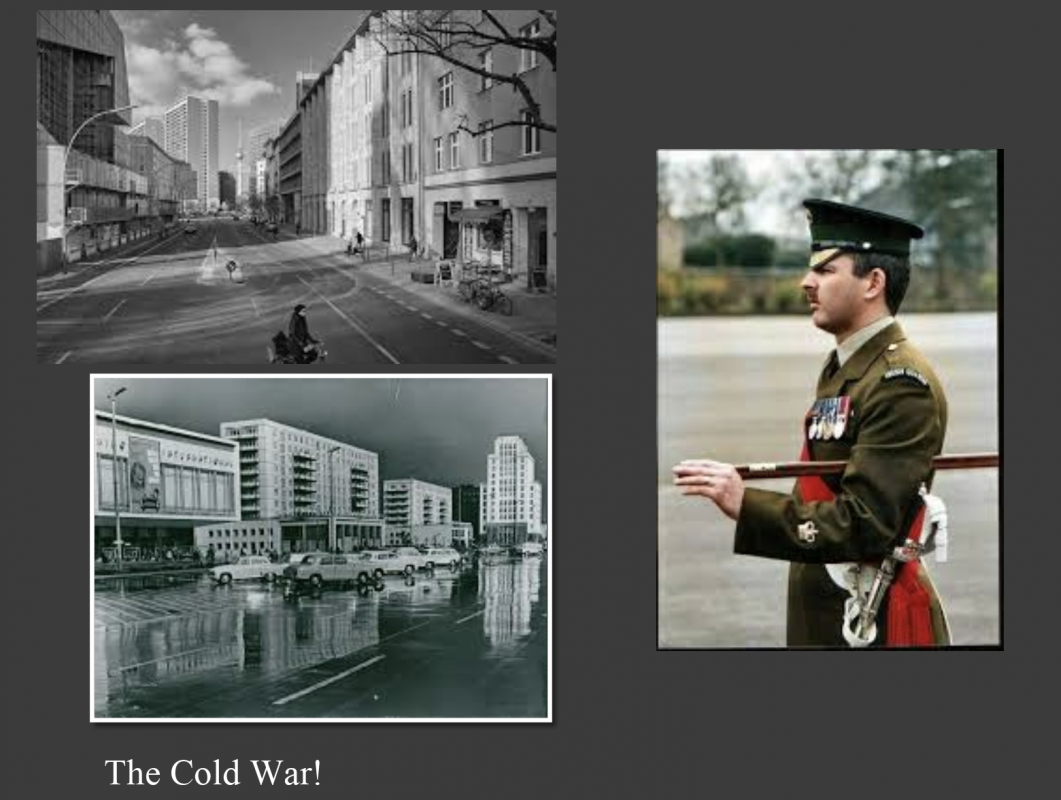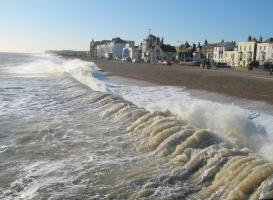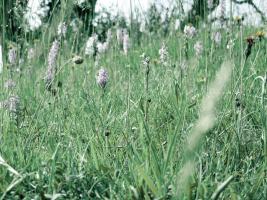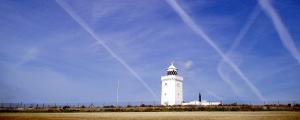'My Berlin' - Mark Watson
Wed, May 13th 2020 at 4:30 pm - 5:30 pm
Mark gives an account of his Berlin experiences. Personal recollections and history of the Cold War form the basis of his fascinating presentation
‘My Berlin’ - Mark Watson
1) On 6th May as part of the Club’s fortnightly virtual meeting, President Elect for 2020/21 Mark Watson, gave a presentation of his experiences in Berlin. He first went there with his family when his father was stationed there from 1971 for three years. In the 1990s after German reunification he was sent to Berlin as Senior Air Traffic Controller at RAF Gatow. Personal recollection combined with the history of Berlin in the Cold War made this a fascinating presentation.
2) Sachsenhausen Camp. The legend on the large iron gates of the camp reads: 'Arbeit Macht Frei' a completely cynical Nazi slogan at all exrermination camps meaning ‘Work makes you free.’ One summer afternoon Mark and Alison were driving north of Berlin and stumbled across this concentration camp. Faced with the brutality of the place they walked around in dismayed silence and disbelief, vowing never to visit any other such places.
3) Rudolf Hess, once Hitler’s deputy, was sentenced to life imprisonment following the Nuremberg trials. He was kept in Spandau Prison, largely under Soviet control where he remained until his death in 1987.
4) The July 1944 Bomb Plot, an attempt on Hitler’s life, failed. The German officers responsible were tried and immediately afterwards were taken to Plotzensee Prison where Hitler had decreed they were to be hung within the hour.
5) The Berlin Air Safety Centre guaranteed the safety of flights through the three air corridors. This was where Mark’s Dad worked.
6) The Berlin Airlift – 1948/9. Stalin blockaded Berlin which could only be reached through three air corridors from West Germany. Some 2.4 million tons of aid were flown into Berlin.
7) Berlin Candy Bomber: Colonel Gail Halvorsen became famous for dropping candy bars to German children on his approach to Templehof Airport during the Berlin Airlift.
8) Travelling Between the Walls: Alpha and Bravo Checkpoints in Berlin.
Throughout the Cold War you had to drive from Alpha to Bravo. When Mark drove through in July 1990 he was told to return any salute from a Soviet guard or there could be a diplomatic incident. Back in 1971 Mark recalls travelling along the road from West Germany and not seeing another car on the 100 mile journey. This journey needed to be completed in more than 2 and a half hours (or the RPM's fined you for speeding) and no more than 4 hours (or they would send out a search party).
9) By Train. The British Military Train from West Germany to West Berlin passed through East Germany. They ran daily from 1949 until 1990. The use of cameras or binoculars was strictly forbidden on these trains as this could cause ‘political embarrassment’. As an 11 year old Mark nearly caused this by using his binoculars which resulted in a stern letter of reprimand to his father. It could have been worse.
10) Checkpoint Charlie, a third checkpoint set up by the Allies between West and East Berlin became the most famous and a symbol of the Cold War, with American and Soviet tanks occasionally confronting one another. It is now a tourist attraction with a museum nearby.
11) Presidents. President Kennedy visited Berlin in 1963, when his phrase ‘I am a Berliner (meaning he was a citizen of Berlin) could be interpreted grammatically as ‘I am a donut’ (Berliner being a type of German pastry). Mark was in Berlin when ex-President Ronald Reagan visited in mid 1991.
12) The Cold war saw heightened tensions between The Allies and the Soviets. Mark's mother and her friends were walking around East Berlin and noticed a Colour Sergeant major following them. When asked why he replied that a Soviet had defected some time earlier and the British Military Authorities were worried that the Soviets would kidnap someone in return. He was there to deter or at least be a witness to the event.
13) The Threat and the Defence. RAF Gatow where Mark was based in the 1990s. The wall was a chain link fence, which would allow the tanks to be parked on the airfield very quickly.
14) The Bridge of Spies between Potsdam and the British Sector. This was the place where Gary Powers was swapped for Rudolf Abel. Other exchanges of agents took place, made famous by the 2015 film of that name.
15) RAF/Luftwaffee Gatow had a history of spying activities and the Cold War atmosphere sometimes reappeared. In the 1970s the RAF had three Chipmunk aircraft but only let the Soviets see one at a time, but the Soviets were not fooled.
16) Religion. The Soviets knocked down a cathedral and built a tower in its place: ironically when the sun shone a cross appeared on the bulb of the tower.
17) The Fall of the Wall and Mr V Muths. In 1989 when the Berlin Wall fell the border between West and East Berlin was breached and the fall of Communism began. Mark heard that Mr Muths from his office was not coming back to work: he’d been an East German spy all along.
18) Berlin now – a vibrant modern city.
19) We do. Mark and Alison were married in Berlin on 9th February1991.
20) We Still Do.
'What We Do' Main Pages:
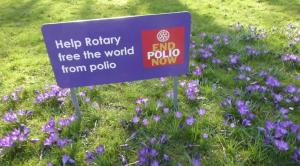
Contact us if your school would like to get involved with growing crocuses and helping to end Polio.
more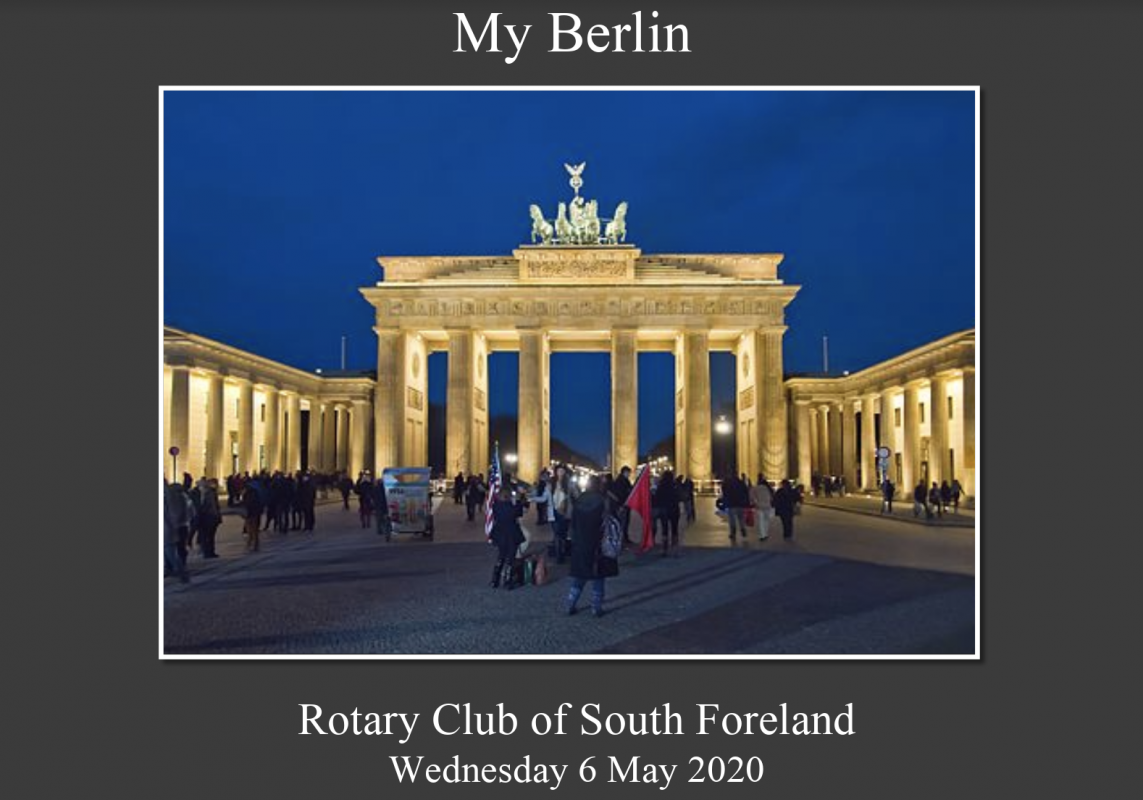

.png)



_1.png)




